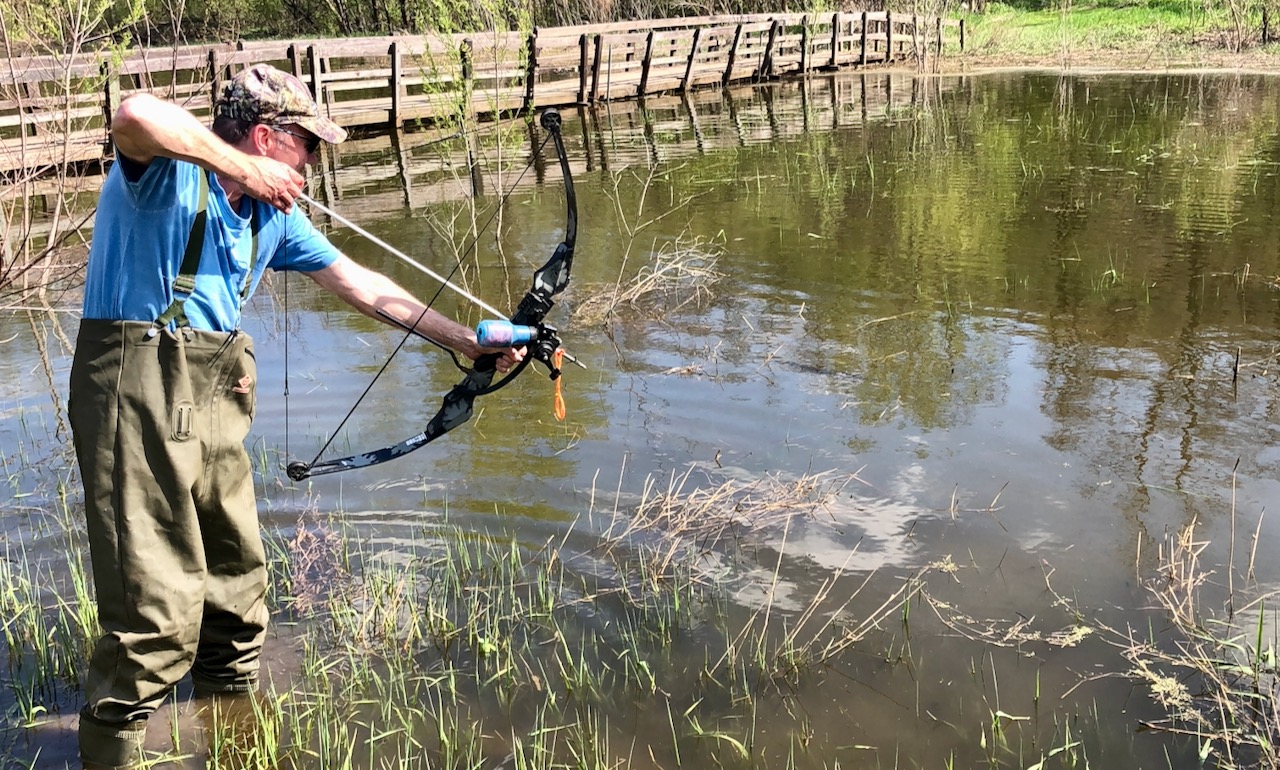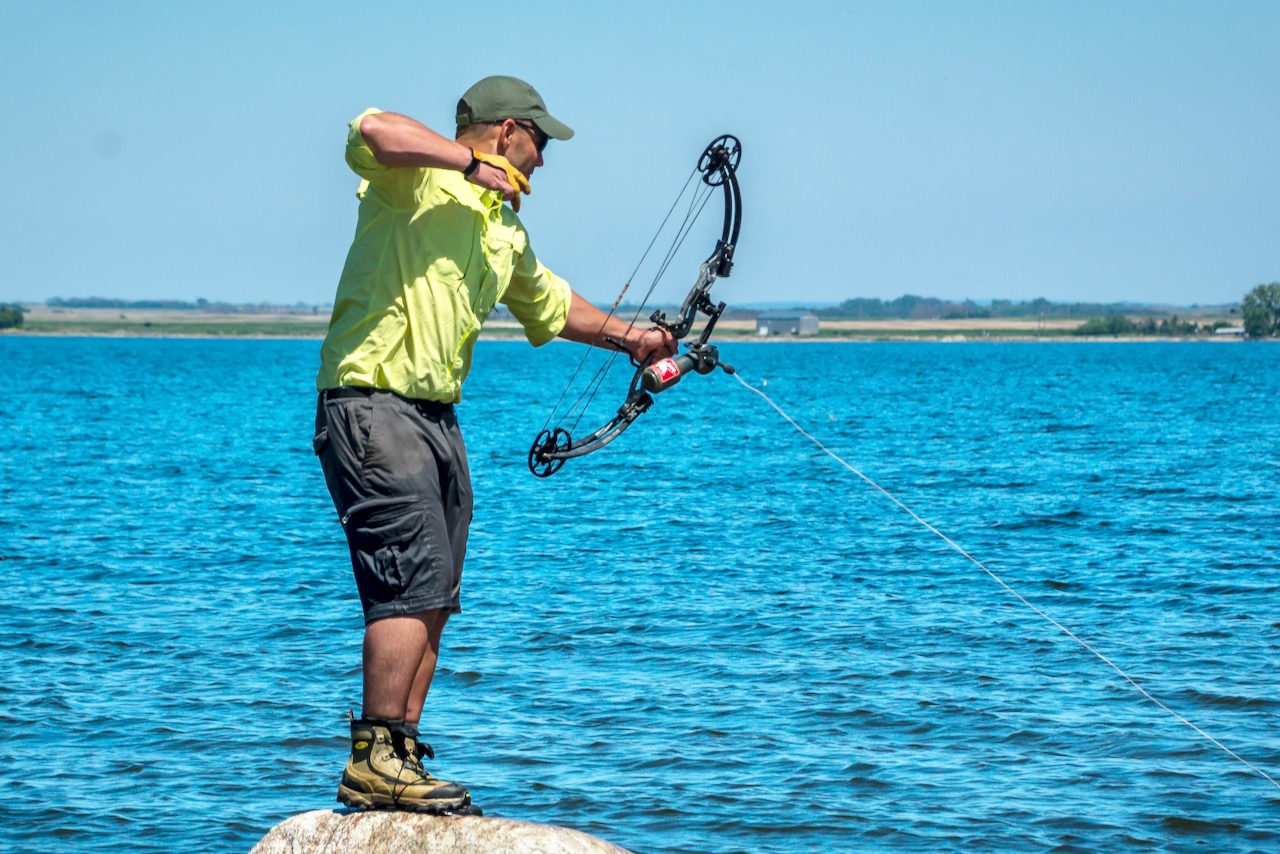HIT THE WATER
Stay in the game during spring and summer by targeting fish
Advertisement

LOCATION
Carp and suckers can be found in the shallows during spring when the water is still cool at around 10°C and the spawning season begins. To find fish, walk along shorelines or move stealthily though the water using any type of watercraft that’s suitable to stand in. Watch for swimming fish, swirls and debris that’s been churned up off bottom by spooked fish. I recommend wearing polarized sunglasses that are tight to your face to avoid messing with your anchor point.
Advertisement
Carp will also sometimes remain stationary when sunning their backs or resting in spawning grounds. And after they spawn later in the season, they can be found swimming around vacuuming food off the bottom. Carp are schooling fish, so when you find one, there will almost certainly be others around.
Suckers can also be found in schools, but they seek warm water with structure and nearby deep water. Common places to search for these bottom-feeders include man-made channels, beneath bridges and along piers.
TECHNIQUE
Advertisement
Carp and suckers generally swim by slowly, so you don’t have to lead them at all. Typically, shots are taken within five metres of the fish when you’re wading, or shooting from a creekbank or watercraft. When targeting fish cruising through a channel, shots from docks or piers rarely exceed 15 metres, which is long for a low-poundage bow projecting a heavy arrow attached to a line. Bowfishing isn’t a finesse sport, as the arrow trajectories are terrible, making it important to shoot close. Fortunately, the opportunities are always plentiful.
Aiming points can vary vastly from shot to shot, depending on how deep the fish are. Keep in mind that sunlight hitting the water at an angle refracts, making fish appear higher in the water column than they actually are, so avoid shooting too high—a common beginner mistake. If the fish is right at the surface, you don’t have to compensate for refraction at all. The deeper the fish, however, the greater the refraction and the lower you have to aim, sometimes well below the body of the fish.
Advertisement
Refraction can be quite deceiving when you first start bowfishing, so begin by aiming low. If you miss a few times at first, don’t get discouraged. Just set your aiming point even lower and you’ll soon connect—and be well on your way to becoming an avid bowfisher.

